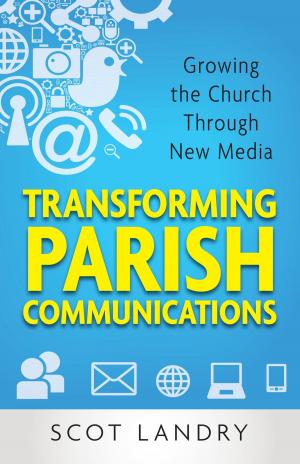How to Pray With the Bible
The Ancient Prayer Form of Lectio Divina Made Simple
Nonfiction, Religion & Spirituality, Christianity, Denominations, Catholic, Catholicism| Author: | Karl Schultz | ISBN: | 9781612782423 |
| Publisher: | Our Sunday Visitor | Publication: | March 27, 2007 |
| Imprint: | Our Sunday Visitor | Language: | English |
| Author: | Karl Schultz |
| ISBN: | 9781612782423 |
| Publisher: | Our Sunday Visitor |
| Publication: | March 27, 2007 |
| Imprint: | Our Sunday Visitor |
| Language: | English |
Praying with the Bible is an active dialogue with God through which we may be taught, healed, and transformed. It is God and the praying person communicating and offering themselves to each other.
Learn an ancient prayer technique known as lectio divina -- a simple, natural rhythm of reading and reflection that can be used for individual and family prayer, Bible study, or small faith-sharing groups.
Lectio, or "holy reading," is well-known to monks and nuns, but it actually began with and is equally appropriate for laypersons. Acclaimed author and retreat leader Karl A. Schultz, author of eight related books, will teach you an intuitive way to use this process for the Liturgy of the Hours, the Rosary, the Stations of the Cross, the Mass, modern papal encyclicals, spiritual classics, journaling, and stress management.
Addressing the Catholic Biblical Federation, Pope Benedict XVI said that, if effectively promoted, lectio will bring to the Church "a new spiritual springtime."
This book is not only about how to pray with the Bible, but how to bring it to life using your own experience, which contributes significantly to a meaningful encounter with God's Word.
Praying with the Bible is an active dialogue with God through which we may be taught, healed, and transformed. It is God and the praying person communicating and offering themselves to each other.
Learn an ancient prayer technique known as lectio divina -- a simple, natural rhythm of reading and reflection that can be used for individual and family prayer, Bible study, or small faith-sharing groups.
Lectio, or "holy reading," is well-known to monks and nuns, but it actually began with and is equally appropriate for laypersons. Acclaimed author and retreat leader Karl A. Schultz, author of eight related books, will teach you an intuitive way to use this process for the Liturgy of the Hours, the Rosary, the Stations of the Cross, the Mass, modern papal encyclicals, spiritual classics, journaling, and stress management.
Addressing the Catholic Biblical Federation, Pope Benedict XVI said that, if effectively promoted, lectio will bring to the Church "a new spiritual springtime."
This book is not only about how to pray with the Bible, but how to bring it to life using your own experience, which contributes significantly to a meaningful encounter with God's Word.















